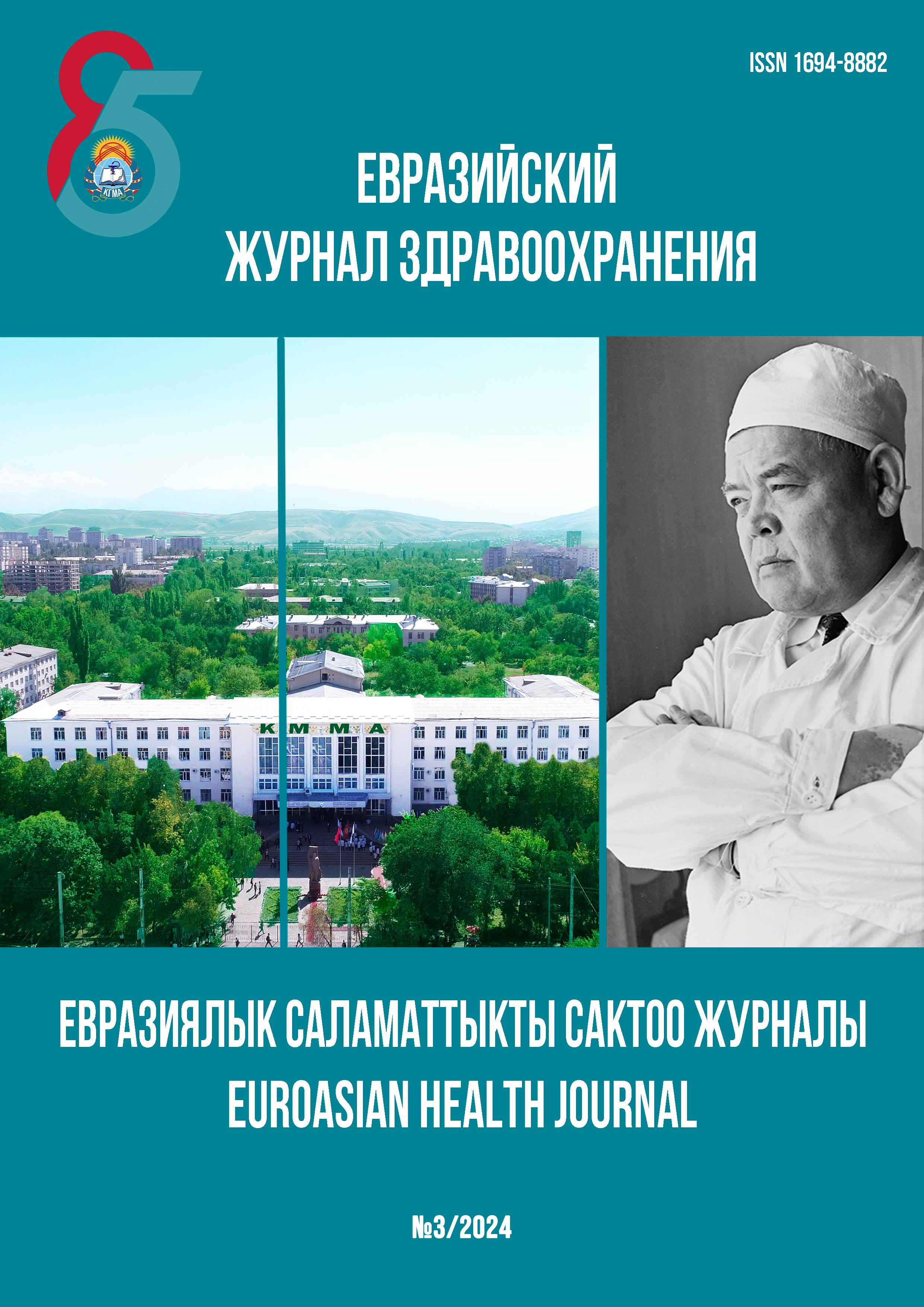TREATMENT OF BRAIN CONTUSIONS USING A DIFFERENTIATED CONCEPT
DOI:
https://doi.org/10.54890/1694-8882-2024-3-126Abstract
The authors conducted an epidemiological study of 2,750 patients who were treated in Bishkek hospitals for the period 2017-2022. The distribution of focal brain injuries by lobular localization was as follows: frontal lobe – 47.1%, temporal lobe – 40.6%; parietal lobe – 12.6%; occipital lobe and cerebellum – 2.1%. Of these, 72 patients underwent surgical treatment, and 44 patients were treated conservatively, including intensive therapy. They studied the clinical and
computed tomographic transformation of focal lesions – bruises, fractures and hematomas of the brain substance, which can be represented as follows: an increase in perifocal and lobar edema – 2-6 days; expansion of the foci of bruising and softening to 7-9 days; regression of intracranial hypertension – 3-4 weeks; regression of meningeal symptoms and rehabilitation of cerebrospinal fluid – 2-3 weeks; complete or significant normalization of neurological and mental status – 5-7 weeks; the transition from the hyperdensive phase of a hematoma or hemorrhagic lesion to an isodensive one – 3-4 weeks; their transition from an isodensive phase to a hypodensive one – 4-5 weeks; resorption of a hematoma followed by a change to the cystic cavity – 2-3 months. A new differentiated approach is proposed in choosing the method and type of treatment for brain injuries.
Keywords:
skull brain injury, brain contusion, focal brain injuries, diagnostics, management.References
1. Коновалов А.Н., Лихтерман Л.Б., Потапов А.А., ред. Клиническое руководство по черепно-мозговой травме. Том I. М: Антидор, 1998. 550 с.
2. Ырысов К.Б., Муратов Д.М., Алибаева Г.Ж., Калыков Т.С. Факторы исхода нейрохирургического лечения при черепно-мозговой травме. Вестник неврологии, психиатрии и нейрохирургиию 2021;14(7-140):511-518.
3. Ырысов К.Б., Азимбаев К.А., Арынов М.К., Ырысов Б.К. Магнитно-резонансная томография в диагностике травматических внутричерепных гематом (монография). Ош. 2020. 119 с.
4. Коновалов А.Н., Карпенко В.Н., Пронин И.Н. Магнитно-резонансная томография в нейрохирургии. М.: Видар; 2009. 471 с.
5. Ырысов К.Б., Муратов А.Ы., Бошкоев Ж.Б. Результаты лечения больных с травматическим сдавлением головного мозга. Вестник КГМА им. И.К. Ахунбаева. 2018;2:81-89.
6. Yrysov K, Mamytov M, Kadyrov R. The effectiveness of additional methods of decompression in patients with supratentorial dislocation of the brain. Journal of Advance Research in Medical and Health Science. 2018;4(9):94-99.
7. Ырысов К.Б., Муратов А.Ы., Ыдырысов И.Т. Результаты клинико-инструментального исследования больных с травматическим сдавлением головного мозга. Вестник КГМА им. И.К. Ахунбаева. 2018;2:75-81.
8. Faleiro RM, Faleiro LC, Caetano E. Decompressive craniotomy: prognostic factors and complications in 89 patients. Arq Neuropsiquiatr. 2018;66(2B):369-73.
9. Gudeman S, Young F, Miller D. Indication for operative management and operative technique in closed head injury. Textbook of head injury. 2019:138-181.
10. Турганбаев Б.Ж., Ырысов К.Б., Жапаров Т.С. Дифференцированное лечение аксиальной дислокации головного мозга при черепно-мозговой травме. Вестник КГМА им. И.К. Ахунбаева. 2017;1:110-116.
11. Struffert T, Reith W. Brain and head injury. Part 1: Clinical classification, imaging modalities, extra-axial injuries, and contusions. Radiologie. 2018;43(10):861-75.
12. White CL, Griffith S, Caron JL. Early progression of traumatic cerebral contusions: characterization and risk factors. J Trauma. 2019;67(3):508-14.







